Foot binding (simplified Chinese: 缠足; traditional Chinese: 纏足) was the Chinese custom of breaking and tightly binding the feet of young girls to change their shape and size for aesthetic purposes. Feet altered by footbinding were known as lotus feet and the shoes made for them were known as lotus shoes.
It has been estimated that by the 19th century 40–50% of all Chinese women may have had bound feet, rising to almost 100% among upper-class Han Chinese women.
The lotus flower, a symbolically significant flower across Eastern countries and religions, is associated with beauty, enlightenment and rebirth. Every morning the lotus flower emerges elegant and pure from muddy waters. In Buddhism, the white lotus flower is symbolic of Bodhi, or, being awakened. Thus the lotus is also a symbol of desire and fertility.

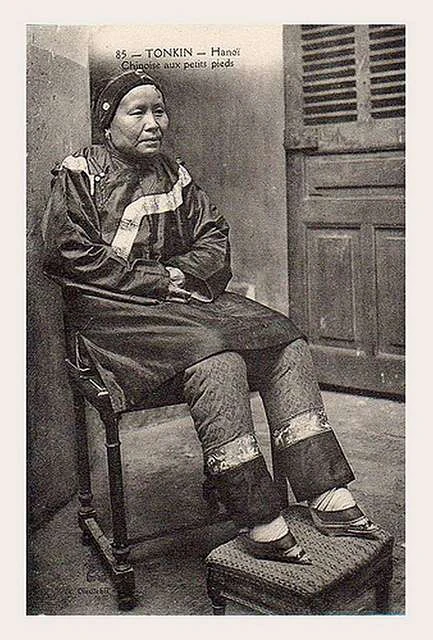
History:
Footbinding was an extremely painful and debilitating cultural practice, existing in China from the 10th century until the establishment of the People’s Republic of China in 1949.
First practice was documented in the Southern T'ang Dynasty (937-956 AD), although some poetry from the Han Dynasty (206 BC-AD 220) suggests that small feet were culturally preferred before documentation of the custom.
The exact origin of the practice is unknown. Most agree that it began because of male erotic fascination with the shape and point of court dancers’ feet while dancing.
A somewhat plausible story states that the emperor Li Yu (reign 961–976 CE) of the Southern Tang Dynasty had a concubine named Yao Niang who performed a "lotus dance," similar to en pointe ballet. She bound her feet into a crescent shape with strips of white silk before dancing, and her grace inspired other courtesans and upper-class women to follow suit.
Concubines and entertainers (upper classes) were originally the only women with bound feet and used the practice for beautification; however, by the Sung Dynasty (960-1279 AD) the practice had spread to all regions and classes of China. Beautifully embroidered and jeweled shoes for bound feet became popular, and men sometimes drank wine from women's footwear. This practice was called 'toast to the golden lotus'.
Bound feet were always concealed within tiny 'lotus shoes' and wrappings and were considered the most intimate part of a woman's body.
Although practiced and enforced by the majority of Chinese for a thousand years, footbinding was never wholeheartedly accepted in China.
Footbinding became a custom necessary for marriage and such a standard that women without bound feet were marginalized. Bound feet rendered women dependent on their families, particularly the men, as they became largely restricted to their homes. Thus, the practice ensured that women were much more reliant on their husbands.
In poorer families who could not afford the bandages or lack of labour associated with a hobbled woman, footbinding was not done until the girls were older. Once a girl married, the bandages were taken off, and she reentered the workforce.
When the Mongols overthrew the Song and established the Yuan Dynasty in 1279, they adopted many Chinese traditions—but not foot-binding. The far more politically influential and independent Mongol women were completely uninterested in permanently disabling their daughters to conform with Chinese standards of beauty. Thus, women's feet became an instant marker of ethnic identity, differentiating Han Chinese from Mongol women.
To the Chinese, the practice was daily proof of their cultural superiority to the uncouth barbarians who ruled them.
The same would be true when the ethnic Manchus conquered Ming China in 1644 and established the Qing Dynasty (1644–1912). Manchu women were legally barred from binding their feet. Yet the tradition continued strong among their Han subjects.
During the Qing Dynasty the emperor Kangxi (reigned 1661–1722) banned footbinding in 1662 but withdrew the ban in 1668 because so many Chinese were still practicing it. Opposition to the practice became more widespread when missionaries to China argued that it was cruel; missionaries also pointed out that the rest of the world looked down on it. After the Nationalist Revolution in 1911, footbinding was outlawed in 1912.
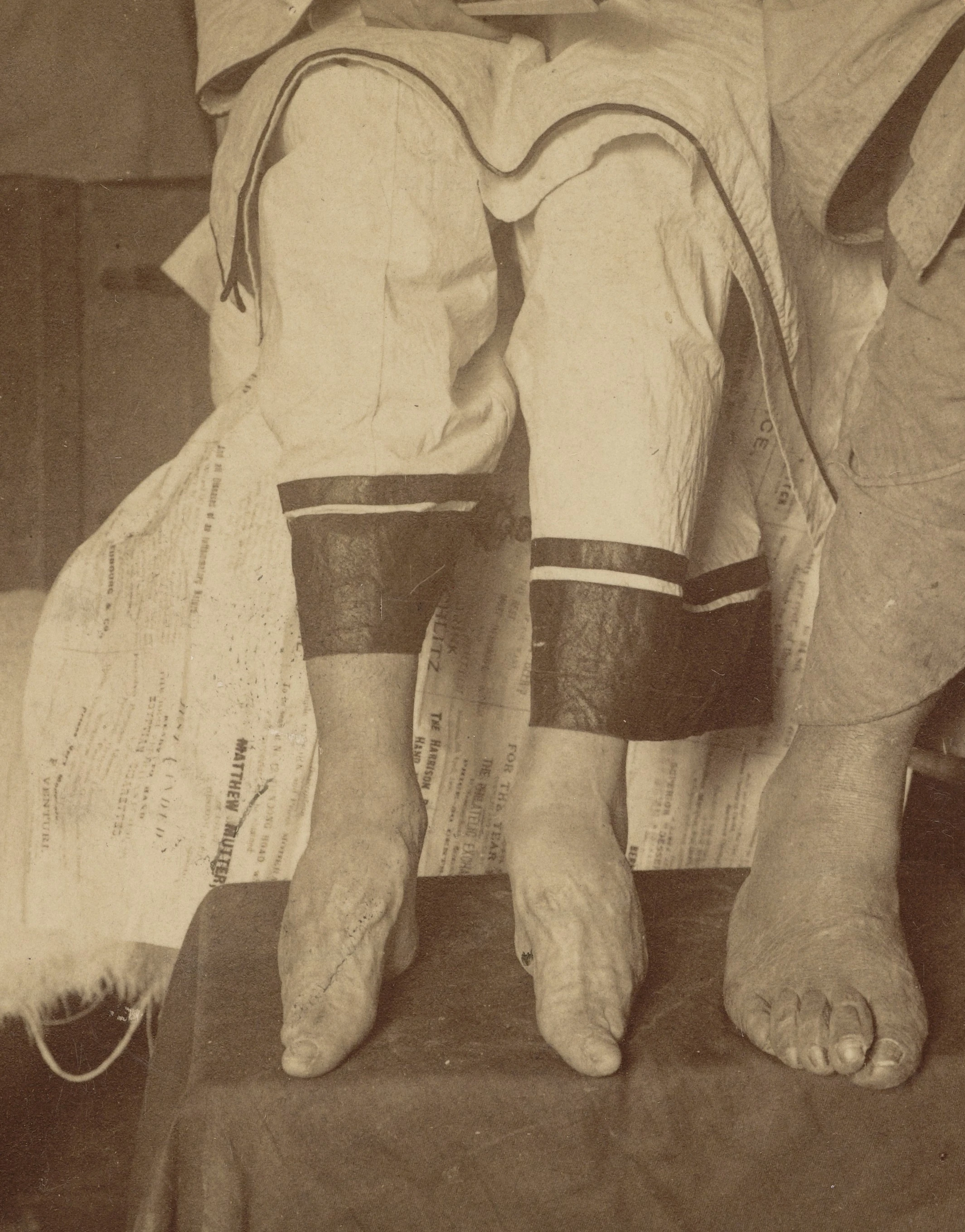
At the turn of the 20th century, early feminists, such as Qiu Jin, called for the end of footbinding. In 1906, Zhao Zhiqian wrote in Beijing Women's News to blame women with bound feet for being a national weakness in the eyes of other nations. There were many anti-footbinding groups and anti-footbinding society. However, the practice did not truly end until the creation of the People’s Republic of China in 1949.
After the Communists finally won the Chinese Civil War in 1949, Mao Zedong and his government treated women as much more equal partners in the revolution and immediately outlawed foot-binding throughout the country because it significantly diminished women's value as workers. This was despite the fact that several women with bound feet had made the Long March with the Communist troops, walking 4,000 miles (6 437 kilometers) through rugged terrain and fording rivers on their deformed, 3-inch (7.62 centimetres) long feet.
Of course, when Mao issued the ban there were already hundreds of millions of women with bound feet in China. As the decades have passed, there are fewer and fewer. Today, there are only a handful of women living out in the countryside in their 90s or older who still have bound feet.
103 years after foot binding was banned, a few women still live with the severe deformity it caused.

The process:
Footbinding was practised in various forms and its prevalence varied in different regions.
It was more common in northern China, where it was widely practised by women of all social classes, but less so in parts of southern China, such as Guangdong and Guangxi.
Footbinding usually began before the arch of the foot had a chance to develop fully, when girls were between 4 and 6 years old; some were as young as 3, and some as old as 12. Mothers, grandmothers, or older female relatives first bound the girl’s feet. It usually started during the winter months since the feet were more likely to be numb and the pain would not be as extreme. The ultimate goal was to make them 3 Chinese inches long (around 10 cm or 4 in), the ideal “golden lotus” foot, though few individuals actually achieved that goal. Those larger were called “silver lotuses” (4 Chinese inches—around 13 cm or 5.1 in) or “iron lotuses” (5 Chinese inches—around 17 cm or 6.7 in—or larger, and thus the least desirable for marriage).
First, each foot would be soaked in a warm mixture of herbs and animal blood. This was intended to soften the foot and aid the binding. Then the toenails were cut back as far as possible to prevent in-growth and subsequent infections, since the toes were to be pressed tightly into the sole of the foot. Cotton bandages, 3 m (10 ft) long and 5 cm (2 in) wide, were prepared by soaking them in the blood and herb mixture.
To enable the size of the feet to be reduced, the four smaller toes were tucked underneath, then pressed with great force downwards and squeezed into the sole of the foot until the toes broke, making the front and back of the foot touch. Then wrapped with bandages. The binding was pulled so tightly that the girl could not move her toes at all and the ends of the binding cloth were then sewn so that the girl could not loosen it.
Each time the feet were unbound, the bandages and feet were cleaned. Any dead skin, blisters, dried blood, and pus were removed. When unbound, the broken feet were also kneaded to soften them and the soles of the girl's feet were often beaten to make the joints and broken bones more flexible. The feet were also soaked in a concoction that caused necrotic flesh to fall off. Immediately after this procedure, the girl's broken toes were folded back under and the feet were rebound. The bindings were pulled even tighter each time the girl's feet were rebound.
If the infection in the feet and toes entered the bones, it could cause them to soften, which could result in toes dropping off. This was seen as a benefit because the feet could then be bound even more tightly. Girls whose toes were more fleshy would sometimes have shards of glass or pieces of broken tiles inserted within the binding next to her feet and between her toes to cause injury and introduce infection deliberately. Disease inevitably followed infection, meaning that death from septic shock could result from footbinding, and a surviving girl was more at risk of medical problems as she grew older. It is thought that as many as 10% of girls may have died from gangrene and other infections owing to footbinding.
A side-by-side aerial view drawing showing the physical difference between normal feet (A) and bound feet (B). Lateral X-ray images comparing a normal foot (C) and a bound foot (D) in postmenopausal women. Qin L, Pan Y, Zhang M, et al. Lifelong bound feet in China: a quantitative ultrasound and lifestyle questionnaire study in postmenopausal women BMJ Open 2015;5:e006521. doi: 10.1136/bmjopen-2014-006521
This unbinding and rebinding ritual was repeated as often as possible (for the rich at least once daily, for poor peasants two or three times a week), with fresh bindings. It was generally an elder female member of the girl's family or a professional footbinder who carried out the initial breaking and ongoing binding of the feet. It was considered preferable to have someone other than the mother do it, as she might have been sympathetic to her daughter's pain and less willing to keep the bindings tight.
The process could cause paralysis, gangrene, ulceration, or death, though death was rare. Binding the feet continued for the rest of the girl’s life. Decorative shoes and leggings were worn over the bandages and could differ with the time of day and occasion.
An effect of the bound feet was the lotus gait, the tiny steps and swaying walk of a woman whose feet had been bound. Women with such deformed feet avoided placing weight on the front of the foot and tended to walk predominantly on their heels. Walking on bound feet necessitated bending the knees slightly and swaying to maintain proper movement and balance, a dainty walk that was also considered to be erotically attractive to some men.

I find it fascinating what people will do/ are forced to do for beauty (or for a chance at a better life).
A small foot in China, no different from a tiny waist in Victorian England, represented the height of female refinement. People have always suffered for beauty and always will, whether they are willing or not.
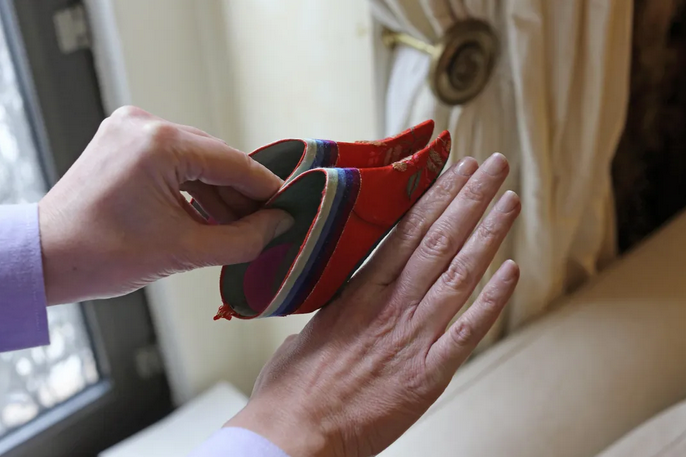


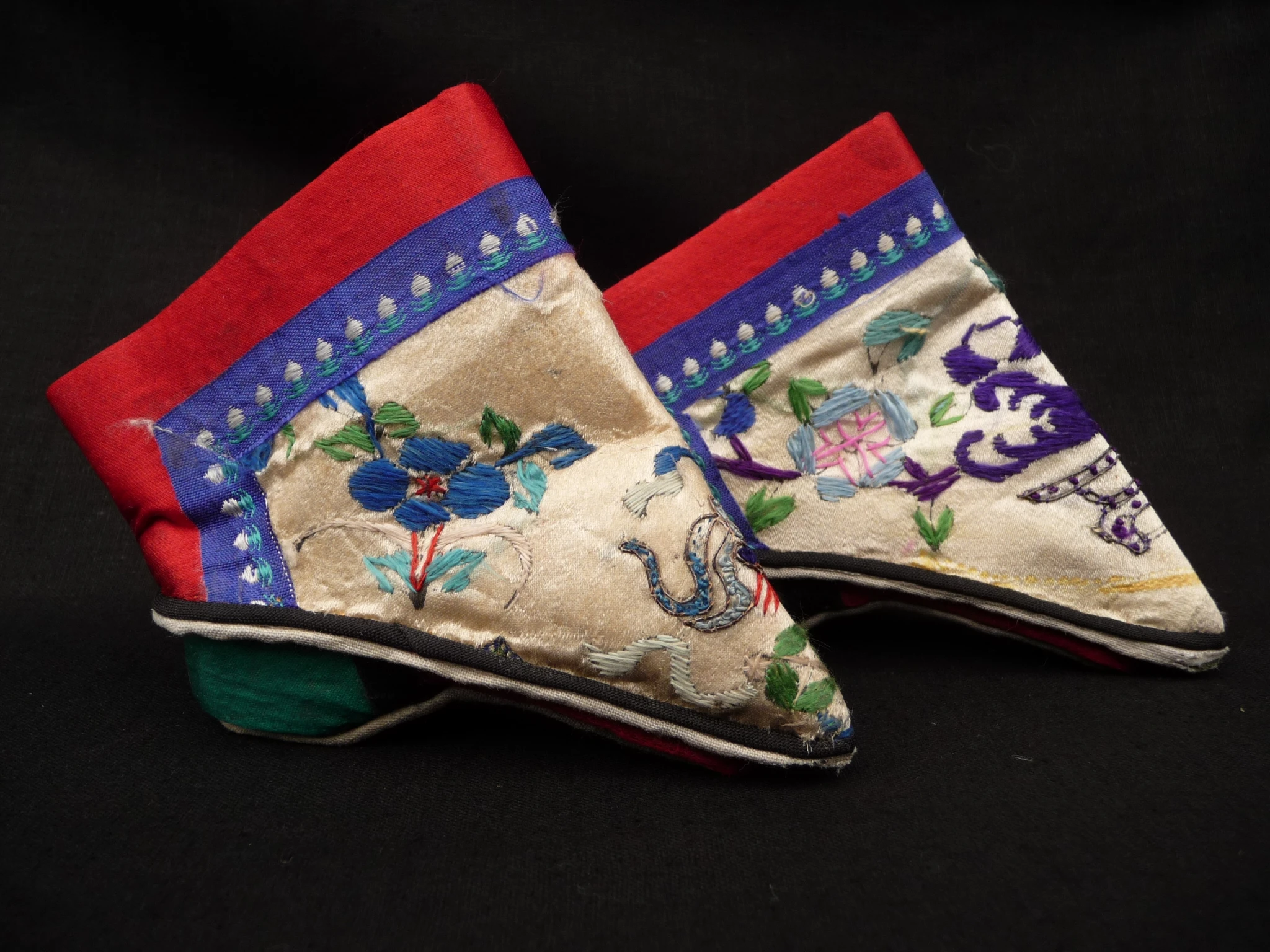
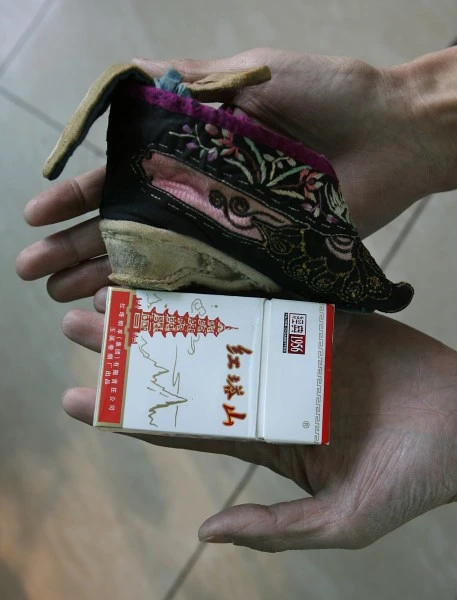


What a terrible history of tradition.